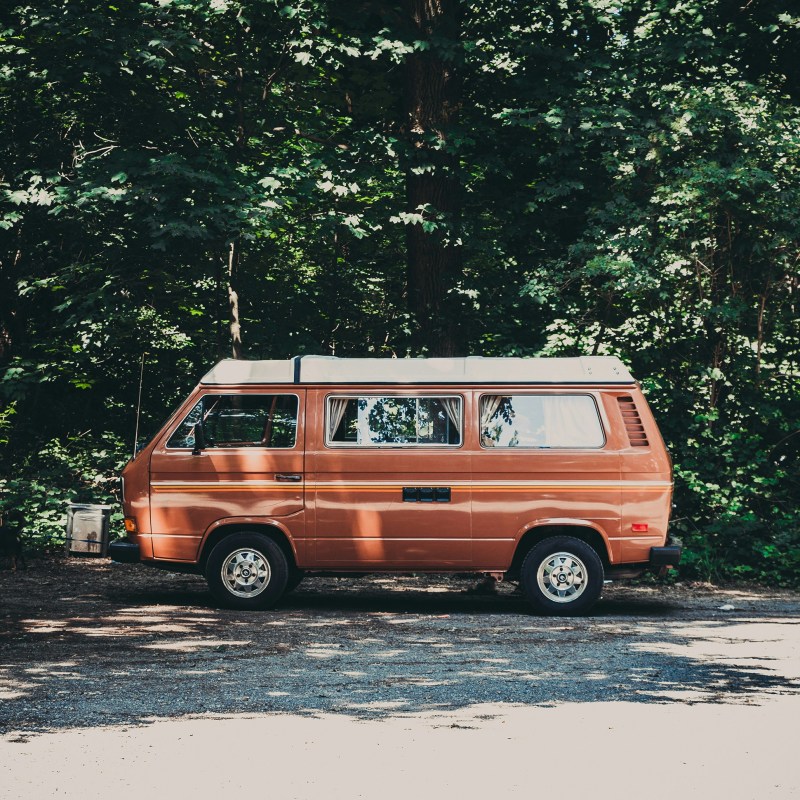
Van life is a budding alternative to RVing.
Videos by TravelAwaits
Compared to living in an RV (part-time or full-time), converted camper vans are more affordable. They’re also more customizable for those with a bit of know-how (or savings) and are easier to maneuver in remote areas.
In other words, they might be smaller, but they can also be mightier—especially when it comes to rugged travel.
That being said, there are plenty of trade-offs for those who opt for a van over an RV. The greatest is space.
Compared to the average van, RVs come with more ready-to-rumble features and amenities. These translate to a much more comfortable experience—while still being customizable for those who want to tinker around.
For those weighing the merits of van life, one question that comes up first is—what sorts of features are most important for first-timers? If you’re exploring the idea of a ‘starter van’, as they’re called, then there are a few core features you need to get right straight from the get-go.
But what are they? Let’s explore.
If you want to dig deeper into my sources for this article, you can explore them here:
Finding the right starter van
Let’s start off with the most important factor at play: the van itself.
Usually, the decision to start with a certain model is based on whether you’ll be living full-time in the van or part-time.
If you’re going full-time, you should look for a slightly larger van. That added space makes it possible to convert your water and electrical systems into even more elaborate setups. I’m talking about amenities like showers and even bathrooms. (Yes—you can have a full shower and functional toilet in a van!)
If you’re planning on staying in your van part-time, then size and scope might not be part of your main focus. Instead, you only need to focus on the basics like finding a great 4×4 and preparing for the weather. (More on temperature below.)
Here are a few solid options for starter vans:
- Mercedes Benz Sprinter Van—includes four-wheel drive
- Ford Transit
- Doge Promaster
- Chevy G Series or Chevy Express—a great budget option
Electricity
Vans usually run on shore power, solar power, alternator charging, and/or battery banks.
It doesn’t matter which system(s) you prefer to use with your starter van—you’ll probably end up switching to another electrical system later on as you gain experience.
Just be aware of which you’re opting for when you purchase your starter van. Every conversion you do will be reliant on the existing electrical system in place.
If you want to be intentional about your electrical system from the start, find a top-tier battery (AGM and lithium are leading the industry today) and nail down your charging source (solar is the most robust option today).
Remember—if you have a bit of know-how, you can start exploring guides from experienced van-lifers immediately. (Or you can hire them to sup up your van.)
Water
Van water systems can be incredibly basic or highly advanced—the choice is yours.
When it comes to functional water storage, most starter vans include wheel well tanks. Tanks are connected to faucets using basic water pumps—no grandiose technology is necessary for a solid starter van.
Once again, it makes more sense to start with a basic setup and then refine it over time. Nailing that sink pump should pave the way for larger projects, like showers and even toilets.
Just keep in mind that you also need to store your grey water. Grey water is the runoff from the sink. Some areas require visitors to dump their grey water at designated stations. Only vans that use organic and eco-friendly products should dump their grey water directly onto public lands.
Storage
Water and electrical systems are the more important features you need to focus on when it comes to starter vans.
That being said, I’d probably spend most of my time crafting a modular and functional storage system. (Or finding the right professional to do the job for me.) Remember—you’re going to be using up critical space for things like water storage and emergency gear like spare tires.
Great storage is all about functional design. As in, are cabinets and shelves placed thoughtfully around the camper? Do they stay shut when you’re driving?
Storage is your first line of defense in crafting an intuitive space that will make your van livable. Don’t underestimate its importance.
Ventilation
Almost all campers come with ceiling vents that are designed to keep the air flowing even when the doors are closed.
But will it be enough? Some blogs recommend looking for models that include windows that slide open or can be propped open at night. That offers a bit more ventilation in areas prone to heat.
However, the easiest way to keep air moving is to put a vent fan in the ceiling. Not only can the fan prevent stuffy and sleepless nights, but it’s also nice to have when cooking (or burning) a meal.
Insulation
Ventilation goes a long way in keeping a van cool and fresh.
But insulation is the true hero when it comes to temperature control—and moisture control, too. Insulation regulates the van’s warm or cool air, while also absorbing condensation to minimize moisture.
That’s particularly important if your camper includes wood features, as these can be negatively harmed by that moisture. But beyond the scope of moisture control, it’s also a critical feature for ensuring warmth in colder climates.
